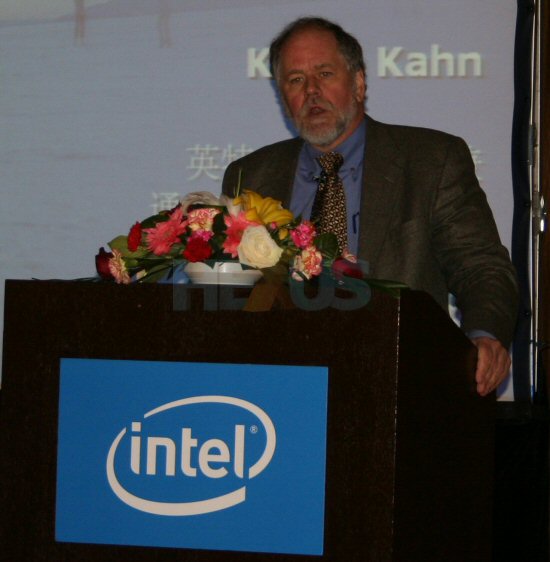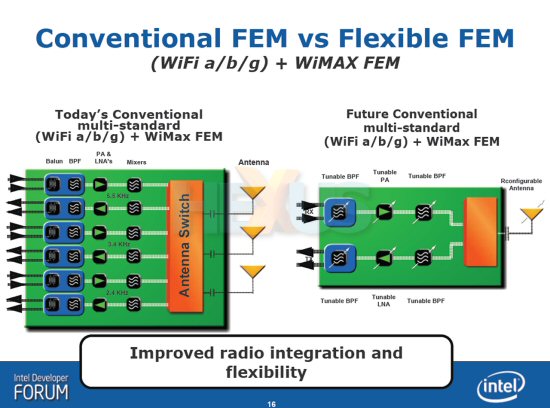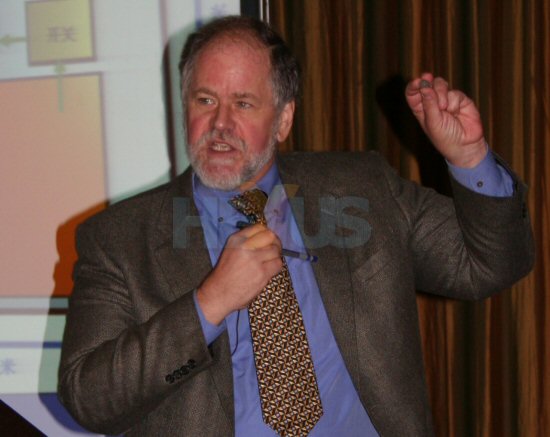Sort out your wireless and radio comms
 Kevin Kahn, Intel Senior Fellow and Director of the Communications Technology Lab, delineated the company's research into multi-radio mobile platforms.
Kevin Kahn, Intel Senior Fellow and Director of the Communications Technology Lab, delineated the company's research into multi-radio mobile platforms.
The internet is pervasive, obviously, and that's particularly true of developing countries that have the fastest PC uptake. Kahn commented that China has, currently, around 37m PCs, which is destined to rise to around 70m in 2010.
 Click for larger image
Click for larger imageNow, most of those PCs (desktop and notebooks) will be connected to the web, so Intel is working on efficient methods for radio implementation. After all, each WiFi device requires a radio, as does 3G, Bluetooth, and GPS. Succeeding here will be profitable, as it opens up a market that has millions of users, and one that is destined to grow.
Right now, Kahn commented, that conventional radios require separate antennas for each standard, be it 802.11g or WiMAX, and that is inherently problematic because you may want to combine multiple connectivity for, say, a single laptop. Just how much space can you allocate for each radio, for example?
Further, putting radios physically together, WiMAX and 802.11g, which may have similar frequencies, causes problems for co-existence if they're situated closely. Simultaneous operation, then, can be hugely problematic. Kahn illustrated such a problem by relaying a Bluetooth/WiMAX signal that was barely discernible, with speech mixed up due to overlapping frequencies interfering with each other. OEMs tend to mix and match radio components without thinking about how concurrent usage will affect the user experience.
How do you solve this problem? Antennae and radio isolation is one. Co-ordinated operation, meaning timing bursts of WiFi and WiMax such that they don't interfere with one another, is another technique.
 Click for larger image
Click for larger imageIntel is developing radio integration by researching a flexible front-end module (FEM) with a configurable antenna, such that no radio is interfering with another at the same time. Kahn showcased such an ASIC on stage.
 Click for close-up of the chip
Click for close-up of the chip












